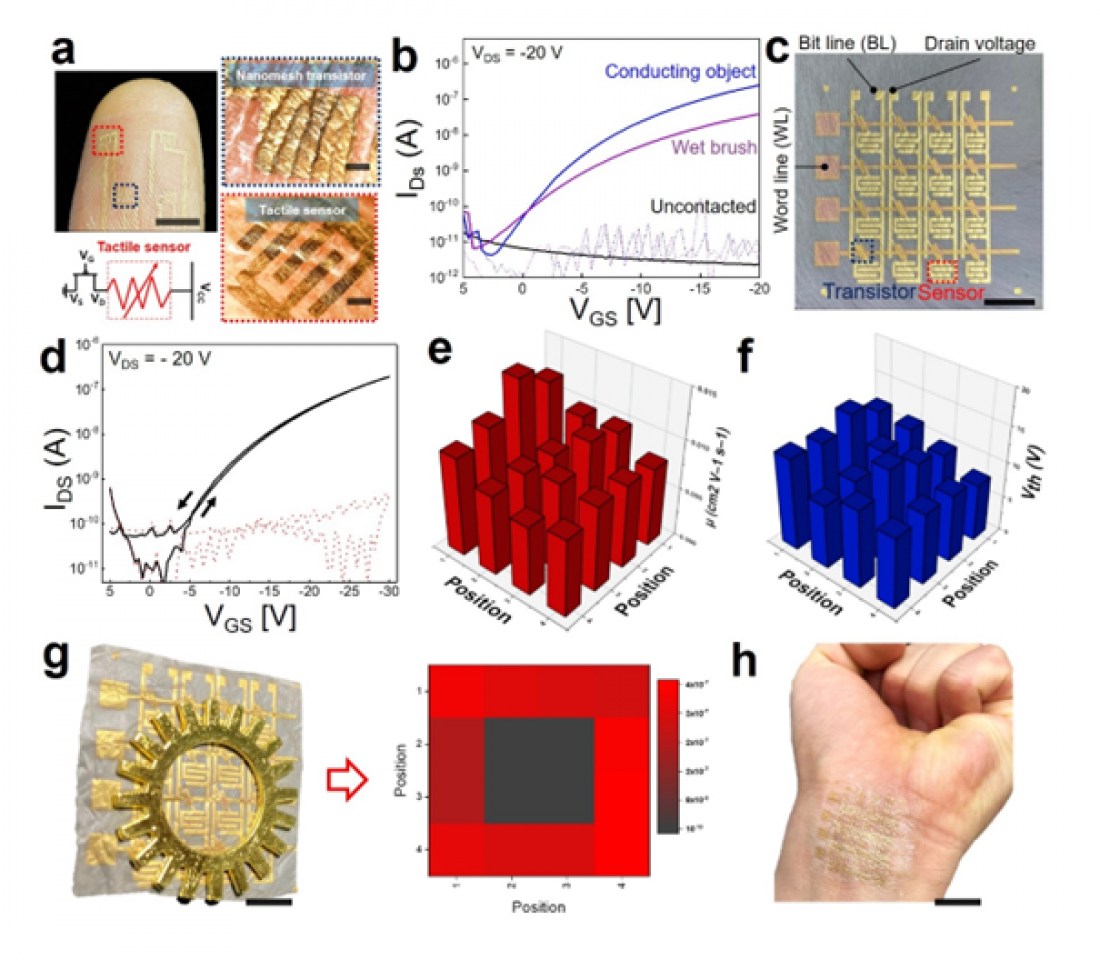□ The research team led by professor Lee Sungwon from the Department of physics and chemistry at DGIST (President Kuk Yang) succeeded in developing the world’s first ultrathin and breathable nanomesh (mesh) organic field-effect transistor (OFET) that can be applied to electronic skin devices. Nanomesh OFET, in combination with various sensors, is expected to enable direct measurement of physiological data from the skin surface and optimize data processing.
□ Electronic skin refers to electronic wearable devices worn on the skin to collect biosignals, such as temperature, heart rate, electromyogram, and blood pressure, and transfer the data. Owing to the recent increase in interest in smart healthcare systems with wearable devices, related technologies are being actively developed. A soft sensor that can attach to smooth and constantly moving skin surfaces is required to accurately measure physiological signals using a real-time health care system. As a result, most electronic devices worn on the skin surface have been manufactured using substrates with flat surfaces such as plastic and rubber.
□ However, long-term attachment of substrate with flat surface structure and low liquid and vapor permeability to biological skin can cause unexpected diseases to occur (such as atopy, metabolic disorders, among others). Hence, it is necessary for electronic devices that come in contact with biological tissues to achieve high permeability to ensure long-term use. Accordingly, research on polymer nanofiber-based nanomesh devices with good permeability has been attracting considerable attention.
□ The research team led by Lee Sungwon at DGIST developed an ultra-thin nanomesh OFET that causes almost no discomfort for the users and can be combined with various sensors. In particular, the developed OFET device showed consistent functions even when folded or curved, with almost no performance degradations, even in severe environments such as 1,000 deformations and high humidity.
□ Manufacturing nanomesh transistors was difficult owing to the rough surface and lack of mechanical robustness and thermal and chemical stability. Professor Lee Sungwon’s team solved these problems simultaneously by using a material called Parylene C[1]as a biocompatible coating. In addition, the conventional vacuum deposition method[2] was used for simpler processing instead of synthesizing or high-temperature processing.
□ Professor Lee Sungwon from the Department of physics and chemistry at DGIST said, “We have successfully developed a nanomesh organic field-effect transistor for the first time and demonstrated an integrated active-matrix tactile sensor. The development of transistors was essential for building a complex circuit, and now with the nanomesh electronic skin device, long-term measurement and processing of physiological data in real time is possible.”
□ This research has been published in “Advanced Functional Materials,” a well-known international academic journal in the field of Nanoscience & Nanotechnology.
Correspondent author's email address : [email protected]
[1] Parylene C is an optically transparent, chlorinated poly(para-xylylene) polymer widely used as a biocompatible and corrosion-resistant coating and packaging material. It is employed in various applications, primarily in electronics, transportation, defense, and aerospace industries.
[2] A process of heating up metal or non-metal material in vacuum to deposit the vapor onto a surface to produce thin films or the process of forming and attaching a thin film using chemical methods.



